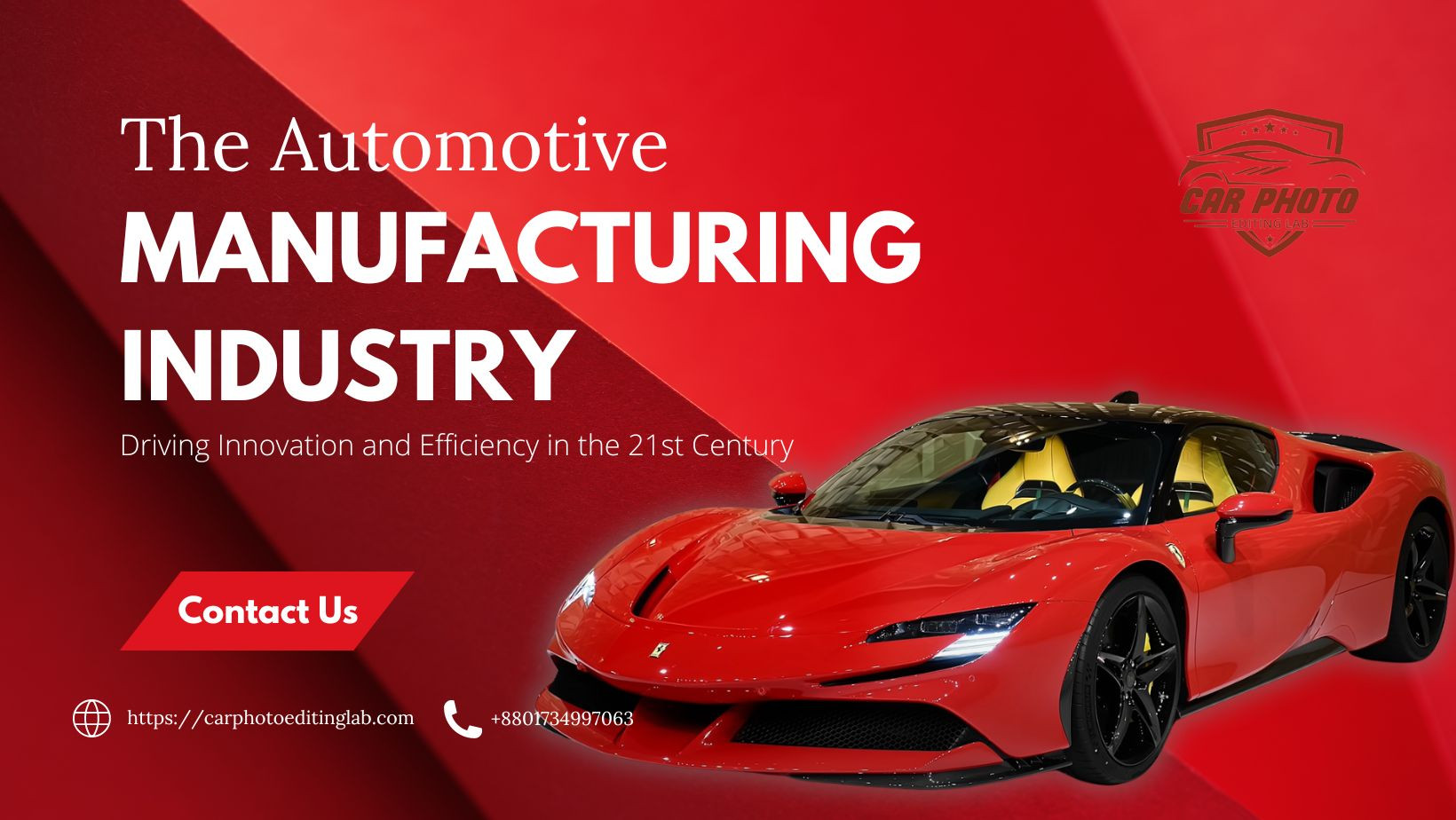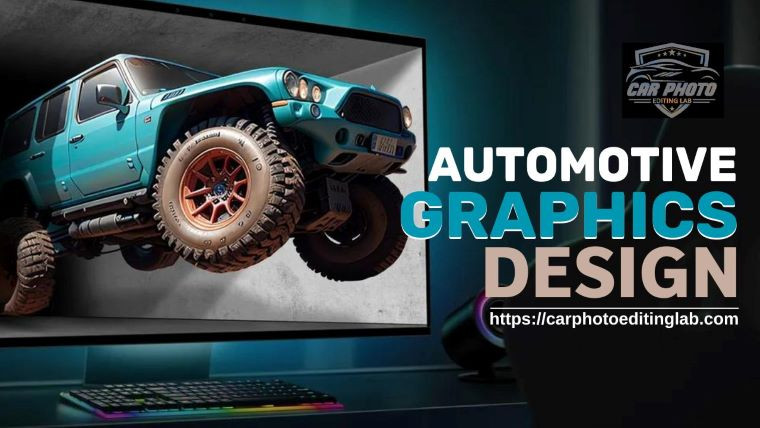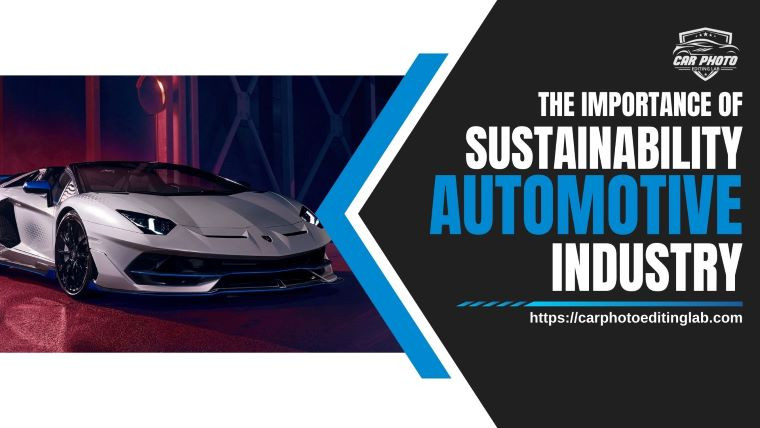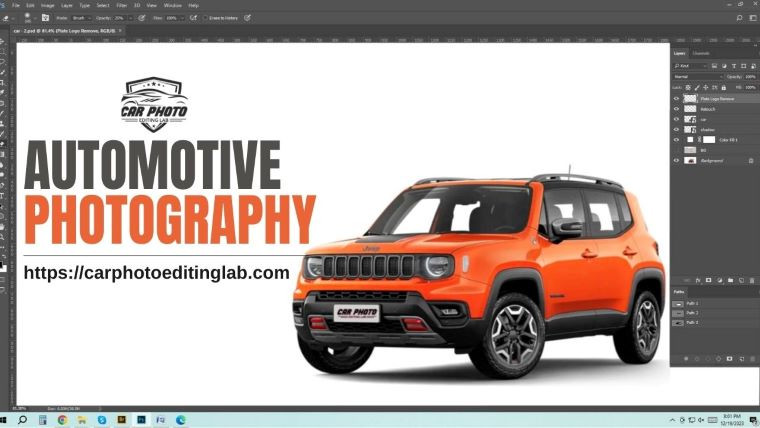-
Contact us with Whatsapp:
+8801734997063 -
Mail Us:
[email protected] -
Service Hours
24/7
The Growth of the Automobile Industry | Car Photo Editing Lab

May 2024
- 22 May 2024
- Business Solution
- 0 Views
The Growth of the Automobile Industry | Car Photo Editing Lab
The automobile industry, an integral part of modern society, has evolved remarkably over the last century, shaping not just how we travel but also how we live, work, and interact with the world around us. From the first horseless carriages to today's advanced electric and autonomous vehicles, the industry's journey is a fascinating story of innovation, economic impact, and cultural transformation.
Early Beginnings: The Birth of an Industry
The automobile industry's roots can be traced back to the late 19th century. Karl Benz is often credited with inventing the first true automobile in 1885, the Benz Patent-Motorwagen. This three-wheeled vehicle, powered by an internal combustion engine, marked the beginning of a new era. Around the same time, Gottlieb Daimler and Wilhelm Maybach were developing their own four-wheeled vehicle. These early pioneers laid the groundwork for the automotive revolution.
The transition from handcrafted vehicles to mass production was a pivotal moment in the industry's history. Henry Ford's introduction of the assembly line in 1913 revolutionized automobile manufacturing. The Model T, produced from 1908 to 1927, became affordable for the average American, democratizing car ownership. By 1927, over 15 million Model Ts had been sold, making it one of the best-selling cars of all time.
The Roaring Twenties and Beyond: Expansion and Innovation
The 1920s saw significant growth in the automobile industry. With the economy booming, car ownership became more widespread. The period also saw the rise of major automobile manufacturers like General Motors, Chrysler, and Ford in the United States, and companies like Mercedes-Benz, Fiat, and Citroën in Europe. These companies introduced various models and innovations, enhancing comfort, performance, and safety.
However, the Great Depression of the 1930s severely impacted the industry. Sales plummeted, and many companies faced bankruptcy. Despite these challenges, the industry persevered, and the post-World War II era ushered in a new phase of growth. The economic boom of the 1950s and 1960s saw the proliferation of car culture in America, epitomized by the rise of suburbia, drive-in theaters, and interstate highways.
Globalization and Technological Advancements
The latter half of the 20th century was marked by globalization and significant technological advancements. Japanese automakers like Toyota, Honda, and Nissan emerged as formidable competitors, introducing innovative manufacturing techniques such as Just-In-Time production and Total Quality Management. These methods improved efficiency and quality, allowing Japanese companies to capture significant market share globally.
The 1980s and 1990s witnessed a surge in technological innovation. Fuel efficiency became a priority due to the oil crises of the 1970s, leading to the development of more economical engines and the introduction of hybrid vehicles. The Toyota Prius, launched in 1997, became the first mass-produced hybrid car, setting the stage for future advancements in green technology.
The 21st Century: A Technological Renaissance
The 21st century has been a period of rapid technological evolution and transformation for the automobile industry. The rise of digital technology has led to the development of advanced driver-assistance systems (ADAS), infotainment systems, and connectivity features that have transformed the driving experience. Safety features like anti-lock braking systems (ABS), electronic stability control (ESC), and advanced airbag systems have become standard.
Electric vehicles (EVs) have emerged as a major focus for the industry, driven by growing environmental concerns and regulatory pressures. Companies like Tesla have revolutionized the market with their high-performance electric cars, challenging traditional automakers to innovate. The development of high-capacity batteries, efficient electric drivetrains, and widespread charging infrastructure has made EVs more viable for the mainstream market.
Autonomous driving technology is another frontier that promises to reshape the industry. Companies like Waymo, Uber, and major automakers are investing heavily in developing self-driving cars. While fully autonomous vehicles are not yet commonplace, advancements in this area are progressing rapidly, with potential implications for urban planning, logistics, and personal mobility.
Economic and Social Impact
The automobile industry's growth has had profound economic and social impacts. It is a major driver of global economic activity, supporting millions of jobs in manufacturing, supply chains, sales, and service sectors. The industry's value chain extends to various other sectors, including steel, rubber, glass, electronics, and petroleum.
Car ownership has transformed societies, offering unprecedented personal mobility and freedom. It has influenced urban development, with cities designed around road networks and car accessibility. The rise of suburban living, facilitated by widespread car ownership, has shaped housing markets, retail patterns, and even social dynamics.
However, the industry's growth has also posed significant challenges. Environmental concerns, such as air pollution and climate change, have prompted calls for more sustainable practices. Traffic congestion and road safety remain critical issues in urban areas. The shift towards electric and autonomous vehicles is seen as a potential solution to some of these problems, but it also raises new questions about infrastructure, employment, and regulation.
The Road Ahead: Challenges and Opportunities
Looking forward, the automobile industry faces both challenges and opportunities. The transition to electric and autonomous vehicles will require significant investment in new technologies and infrastructure. Governments and policymakers will play a crucial role in shaping the regulatory environment to support innovation while addressing environmental and safety concerns.
Sustainability will remain a key focus. Automakers are investing in renewable energy, recycling programs, and sustainable materials to reduce the environmental impact of vehicle production and operation. The development of new mobility solutions, such as car-sharing and ride-hailing services, offers opportunities to reduce the number of vehicles on the road and lower emissions.
The integration of artificial intelligence (AI) and machine learning into vehicle systems promises to enhance safety, efficiency, and user experience. AI can improve traffic management, optimize fuel consumption, and enable advanced features like predictive maintenance. The continued evolution of connectivity and the Internet of Things (IoT) will create new possibilities for smart cities and connected ecosystems.
Conclusion: An Ever-Evolving Industry
The automobile industry has come a long way since the days of the Benz Patent-Motorwagen and the Model T. Its growth has been marked by continuous innovation, economic significance, and profound societal impact. As the industry navigates the challenges and opportunities of the 21st century, its ability to adapt and innovate will be crucial in shaping the future of mobility.
The journey of the automobile industry is a testament to human ingenuity and the relentless pursuit of progress. From the early days of mechanical experimentation to the cutting-edge technologies of today, the industry's evolution reflects broader trends in technology, economy, and society. As we look to the future, one thing is certain: the automobile industry will continue to drive forward, transforming how we move and live in ways we can only begin to imagine.
Written By: Clipping Partner India
A professional Photo Editing Service Provider.
























1 Comment
Georgiana
28 May, 2025 08:35 PMNicely put, Many thanks. casino en ligne Terrific postings, Many thanks. casino en ligne Wonderful material. Thanks. casino en ligne francais Regards. A lot of information. casino en ligne Regards, Excellent stuff. casino en ligne Fantastic facts. Thanks. casino en ligne francais Wonderful stuff, Regards. casino en ligne With thanks. Loads of data. casino en ligne France Truly many of good knowledge. casino en ligne France Wonderful content, Kudos. casino en ligne